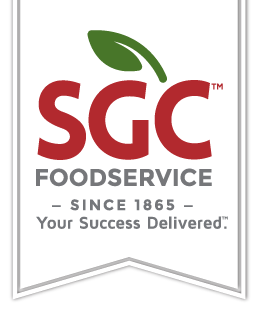Foodservice operators should avoid trying to be everything for everybody and focus on a simplified menu they can execute with consistency.
Smaller menus have a positive impact on both operators and consumers.
A large menu with multiple categories appeals to most consumers and used to be what foodservice operators thought was best for their business. It took a pandemic to realize that a small menu comprised of core items was in the best interest of the business.
All foodservice operators started with core items, but with competition and consumer requests, there was a tendency to try to be everything for everybody. Big menus breed complexity and therefore inconsistency. Smaller, simplified menus focus on the items that a foodservice operation is good at and can produce the same way every time. It makes it easier for the team members to prepare the item and easier for the consumer to order, pay and pickup their items.
Here are six reasons why smaller menus make sense in today’s foodservice environment:
1. It’s Easier for Team Members to Execute.
The labor market remains tight, especially when it comes to finding skilled foodservice staff. Even if there was a lot of availability, specialists are costly. A smaller menu lets operators hire quality people who want to learn. They come in with a clean slate and just need to be trained properly. A certification process should be in place which lets each team member execute all menu items correctly to the standards set by the operator and expected by the consumer.
2. Fewer SKUs Are Required, Taking up Less Storage Space.
A smaller menu requires fewer ingredients. The goal is to have no single use SKUs in a foodservice establishment, and a simplified menu provides a great impetus to accomplishing this. Fewer SKUs results in less waste as products are constantly being turned over. It also minimizes the storage space that is required at the location. The key is to have SKUs that provide versatility. This includes packaging which can easily fill up storage space.
3. Less Space Is Needed for Production and Service in New and Renovated Locations.
The trend, in 2023, continues to be about building smaller spaces that have multiple applications. They are less expensive to build and to operate. Foodservice is evolving in the c-store segment, but the amount of space to be allocated for foodservice must be in line with these new prototypes. Keeping menus smaller decreases the amount of space needed for production and service but still provides a strong visual message to customers that foodservice is important at the location, and everything being served will meet or exceed their expectations.
4. It’s Easier for Customers to Order and Customize Their Orders.
One of the top four expectations from consumers from Kinetic12’s Q3 survey was the need for it to be easy to order, pay and pickup orders. Smaller menus can accomplish this. Whether ordering via an app, at the pump, via a kiosk or directly from a team member, a smaller menu is easier to navigate and allows for customization, which can lead to a higher average check.
5. It Offers More Consistent Quality and a Clear Message to Customers as to What You Do Well.
A smaller menu will result in more consistent quality. If there are less things to prepare and these menu items are core items, they will likely be consistent, which is a huge draw for customers. It also sends a message to then consumer that this is what we do well, and we are going stick to those products. Having a menu comprised of items that are of inferior quality and are there just to broaden the menu will only result in customers not coming back.
6. Allows for Innovation Focused on Core Items.
Operators can add menu items easily using the same ingredients. Consumers want to see innovation. They are always looking for more things and a reason to frequent an operator’s business more often. Having a smaller menu gives the operator a chance to innovate around core items. If you are known for pizza, why not create items using those ingredients such as calzones or folded sandwiches. The addition of bold-flavored ingredients can be extremely versatile. A basic ranch dressing, mayonnaise or sour cream base can become a signature product with the addition of a bold-flavored spread such as chimichurri or roasted poblano pepper. A small menu can get bigger without adding ingredients or labor.

_y5kz2535.jpg)